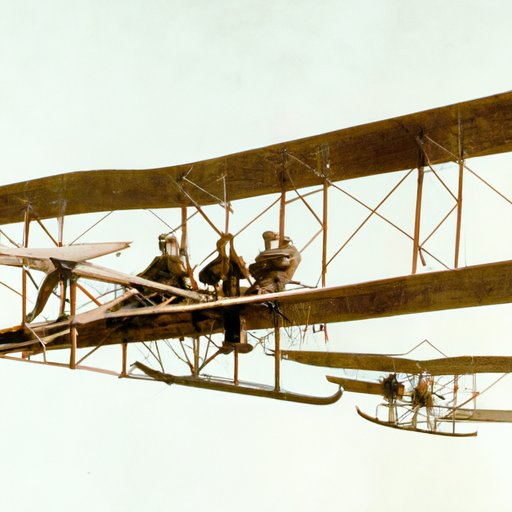Introduction
The invention of the airplane by the Wright brothers in 1903 is widely regarded as a landmark achievement in aviation history. But what of the many other inventors who came before them? This article looks at the early aviation history of the pre-Wright Brothers inventors who made pioneering contributions to the development of the plane.
It examines the various aircraft they constructed and the technology they utilized in their endeavors. It also highlights the impact of their achievements and how they paved the way for the Wright brothers’ own invention.
Pre-Wright Brothers Inventors and Their Aircraft
The 19th century saw a number of aeronautical pioneers make significant advancements in the field of aviation. These included men such as George Cayley, Otto Lilienthal, Samuel Langley, and Octave Chanute. Each made important contributions to the development of the airplane.
Cayley is often credited with being the first to recognize the four forces that act on an airplane—lift, drag, thrust, and gravity. He was also the first to design a fixed-wing aircraft capable of controlled flight. His gliders featured wings and horizontal and vertical tail surfaces, which formed the basis for future designs.
Lilienthal was a German engineer and aviation pioneer who studied the effects of air resistance on objects moving through the air. He constructed several successful gliders and used them to conduct experiments to measure the lift and drag forces acting on the aircraft. His work was influential in the development of the Wright brothers’ airplane.
Langley was an American scientist and inventor who developed a model airplane powered by a steam engine. Although the aircraft was not capable of sustained flight, it demonstrated the feasibility of powered, heavier-than-air flight.
Chanute was a French-American engineer and inventor who conducted extensive research into the mechanics of flight. He designed several gliders and kites, and was the first to use curved surfaces on an aircraft to increase its lift. His work served as an inspiration to the Wright brothers.
Technology Behind Pre-Wright Brothers Aircraft
The technology used in the construction of pre-Wright Brothers aircraft was fairly basic. Most aircraft were constructed from wood, cloth, wire, and paper. Engines were typically steam-powered or operated by compressed air. Control systems were rudimentary and relied on the pilot manipulating the wings and tail surfaces.
The limitations of the technology meant that the aircraft constructed by these pioneers were unable to achieve sustained flight. However, the advances they made in understanding the principles of aerodynamics and aircraft design were crucial in paving the way for the invention of the airplane by the Wright brothers.
As noted by Dr. Tom Crouch, Senior Curator at the National Air and Space Museum: “The Wright brothers didn’t just come up with the idea of powered flight out of nowhere. They stood on the shoulders of giants like Lilienthal, Cayley, and Chanute who had already done a great deal of work in understanding the principles of aerodynamics and aircraft design.”
Conclusion
The invention of the airplane by the Wright brothers in 1903 revolutionized transportation and ushered in a new era of aviation. However, their achievement would not have been possible without the contributions of the pre-Wright Brothers inventors who pioneered aircraft design and aerodynamic principles.
George Cayley, Otto Lilienthal, Samuel Langley, and Octave Chanute are among the most notable of these early aviators. Their aircraft were limited by the technology available at the time, but their accomplishments laid the groundwork for the Wright brothers’ own invention.
The achievements of these 19th century aeronautical pioneers should not be overlooked. Their work was instrumental in taking humanity from the age of balloons to the age of airplanes.
(Note: Is this article not meeting your expectations? Do you have knowledge or insights to share? Unlock new opportunities and expand your reach by joining our authors team. Click Registration to join us and share your expertise with our readers.)
